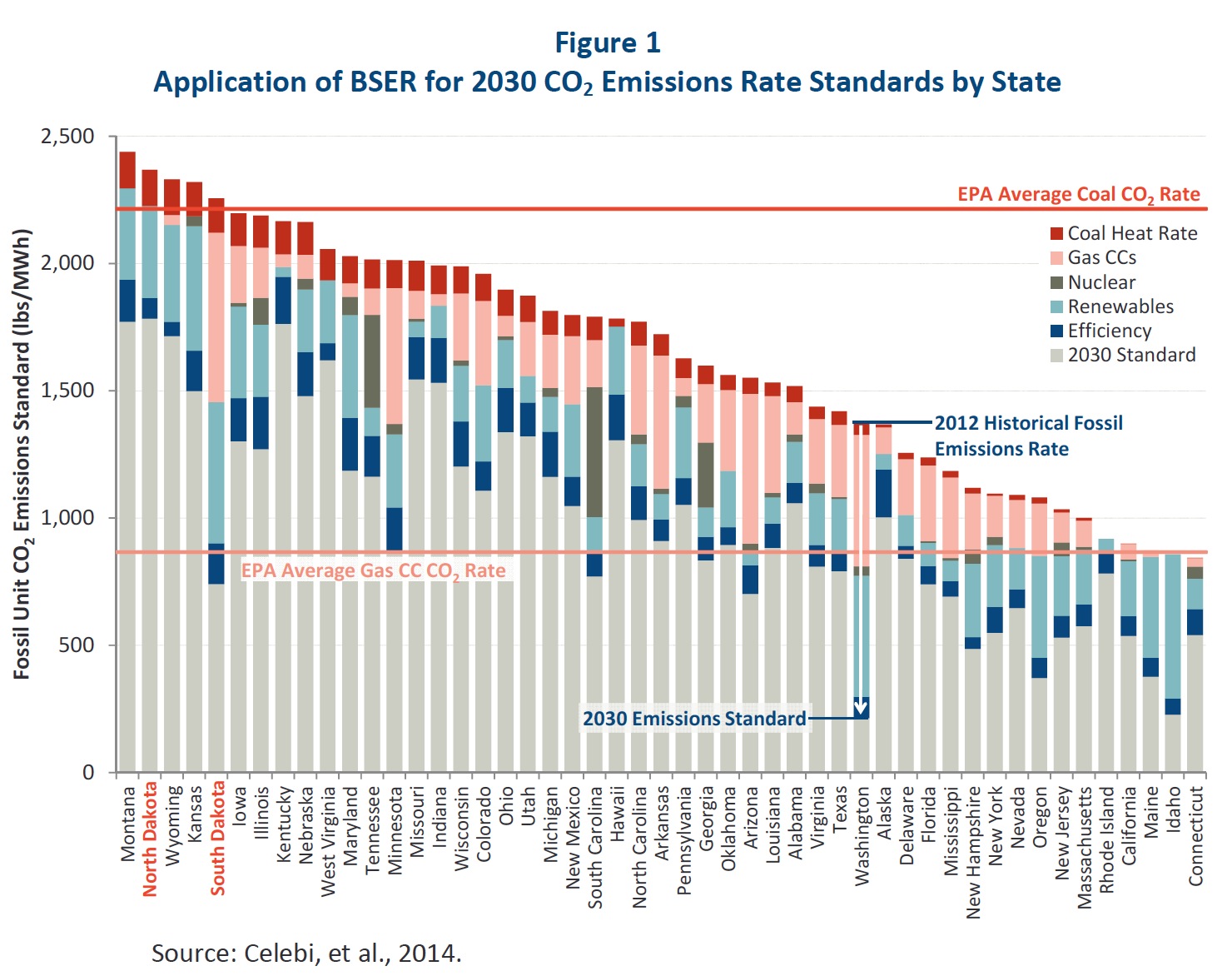THE BRATTLE GROUP
Executive Summary
The United States (“U.S.”) power system is undergoing a fundamental transformation, largely driven by advances in technology and low natural gas prices. This transformation is putting significant pressure on existing coal-fired and even nuclear generation, increasingly leads to renewable energy resources being cost-competitive with fossil-fired generation, and results in myriad choices for consumers that promise to permanently alter the role of demand in the power system. As a consequence, the fuel mix and associated emissions of the U.S. power system are changing rapidly, as are the actions taken by system operators to manage the quickly evolving electric system.
Against this backdrop the U.S. Environmental Protection Agency (“EPA”) released in June 2014 the proposed Clean Power Plan (“CPP”) as a means of implementing Section 111(d) of the Clean Air Act to regulate carbon dioxide (“CO2”) emissions from existing power plants and has since received over four millions comments on the CPP.2 In November 2014, the North American Electric Reliability Corporation (“NERC”) released an Initial Reliability Review (“IRR”) of the CPP. In this review, NERC questions several assumptions in the CPP and identifies elements of the CPP that it suggests may lead to potential reliability concerns. Several Regional Transmission Organizations (“RTOs”) and Independent System Operators (“ISOs”) have issued their own reports and submitted comments highlighting their concerns about how the CPP might impact reliability in their areas.
Maintaining reliability is the primary focus of system planners and operators. At a high level, NERC recommends in the IRR, and we agree, that further in-depth analysis should be conducted as the EPA finalizes the CPP so that any emerging reliability issues can be managed.
Following a review of the reliability concerns raised and the options for mitigating them, we find that compliance with the CPP is unlikely to materially affect reliability. The combination of the ongoing transformation of the power sector, the steps already taken by system operators, the large and expanding set of technological and operational tools available and the flexibility under the CPP are likely sufficient to ensure that compliance will not come at the cost of reliability.
NERC’s IRR identifies several issues with the methodologies used by the EPA to estimate the four “building blocks” that make up the Best System of Emissions Reductions (“BSER”), which in turn is used to set state-level emissions rate standards between 2020 and 2029. NERC also discusses the potential reliability concerns of implementing the building blocks as suggested by the EPA’s analysis. Some RTOs/ISOs have gone further in their own reports and statements, being at least suggestive that the CPP, if implemented as proposed, will cause reliability problems.
NERC’s concerns with the EPA’s assumptions in constructing the BSER should conceptually be separated from NERC’s arguments about potential reliability issues that could arise from the states’ approaches to complying with the CPP. We look at these two issues in order below.
Table ES-1below summarizes NERC’s main concerns with the assumptions underlying the EPA’s development of BSER and provides our view of these concerns and a description of the set of tools available to address each concern where appropriate. NERC is concerned that overstating the potential for emissions reductions from some of the BSER building blocks may challenge the reliability of the system. It is concerned that in the short term, emissions rate reductions will have to come from increases in the use of natural gas-fired plants, which NERC believes could be difficult to accomplish due to pipeline constraints and resulting reliability issues due lack of natural gas supply. In the longer term, NERC believes that the CPP could require increased deployment of Variable Energy Resources (“VERs”) such as wind and solar photovoltaic (“PV”) capacity, which could challenge operation of the power system.
The assumptions underlying the construction of achievable emissions reductions in each of the four building blocks comprising BSER are likely all subject to some level of debate. As indicated in Table ES-1, we agree that in several areas the methodology used by the EPA to derive BSER is likely a simplification. However, we also show that legitimate arguments exist to counterbalance NERC’s concerns in each building block and that, as a result of these arguments (and the additional tools we outline as options to counteract the issues raised by NERC) NERC’s reliability concerns could be partially or entirely mitigated.
Download full version (PDF): EPA’s Clean Power Plan and Reliability
About The Brattle Group
www.brattle.com
The Brattle Group answers complex economic, regulatory, and financial questions for corporations, law firms, and governments around the world.
Tags: Clean Power Plan, CPP, Environmental Protection Agency, EPA, The Brattle Group







 RSS Feed
RSS Feed